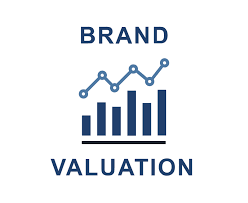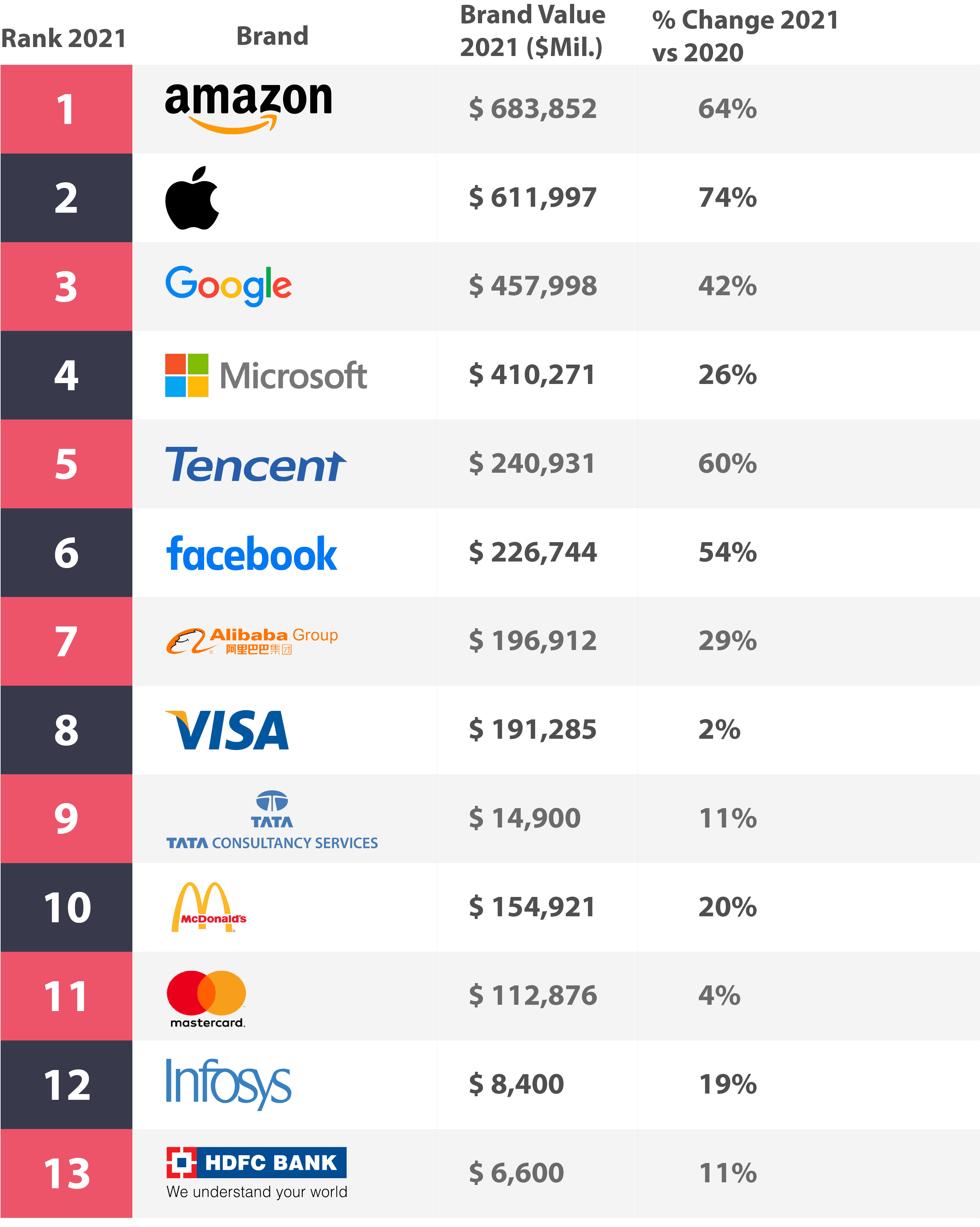
Executive Summary<
“If this business were split up, I would give you the land and bricks and mortar, and I would take the brands and trademarks, and I would fare better than you.” — John Stuart, Chairman of Quaker
Brand has come a long way from the time when it was first thought that the brand was just another word for Logo. It is widely appreciated that brand is one of the most valuable assets an organization owns. This is because of the economic impact that brands have.
Brand influences the choices of customers, employees, investors and government authorities. A study concluded that on average brands account for more than one-third of shareholder value. The study reveals that brands create significant value either as consumer or corporate brands or as a combination of both.
Need of brand valuation
A brand can be valued anytime and for many reasons, that includes – Brand strategy, Financial Reporting, Mergers and Acquisitions, Value Reporting, Licensing, Legal Transaction, Accounting, Strategic Planning, Management Information, Taxation Planning and Compliance and Liquidation.
Several studies have tried to estimate the contribution that brands make to shareholder value. On an average brands account for more than one-third of shareholder value. The study reveals that brands create significant value either as consumer or corporate brands or as a combination of both.
“Brand valuation is not considered as a mainstream practice, but instead a niche. There are traditional methods available to measure the value of business, but to value the Brand categorically there is a need to understand the modern ways which includes measuring various attributes of brand like clarity , Protection, Commitment, Responsiveness, Authenticity, Relevance, Differentiation, Consistency, presence & understanding and assigning value to these attributes in monetary terms. There requires an experience of the valuer who can perceive and attach a monetary value to the intangibles.”
Source: Brand Finance and Kantar BrandZTM Most Valuable Brands 2021
Detailed Summary
The ISO standard sets out the appropriate process of valuing brands and sets out six key requirements, transparency, validity, reliability, sufficiency, objectivity and financial, behavioral and legal parameters.
-
- Cost Based Approach
- Market Based Approach
- Income Based Approach
(1) Cost Based Approach – Cost-based approaches define the value of a brand as the aggregation of all historic costs incurred or replacement costs required in bringing the brand to its current state: that is, the sum of the development costs, marketing costs, advertising and other communication costs, and so on. This approach is not prevailing in the market because there is no direct correlation between the financial investment made and the value added by a brand.
(2) Market oriented Approach: The market approach is an approach which investigates value based on the transaction value of assets. Its valuation is priced according to transactions between third parties, so it is characterized by high objectivity, but especially in the case of intellectual property rights, similar transaction with a similar awareness, strength, or economic and legal situation often do not exist, and its adoption is really difficult.
(3) The Income oriented Approach – It is the most commonly used approach used to measure the value of the brand. The income approach focuses on the present value of the economic benefits which brand shall generate in the future. This method evaluates profits gained in the future by actually utilizing the brand name, but it is accompanied by the uncertainty of future forecasts. Few of its methods are as follows:
-
-
- Relief from Royalty Method- ‘Royalty Relief’ is an ‘economic use’ approach to valuation which determines the value of the brand in relation to the royalty rate that would be payable for its use where it owned by a third party.
- Premium Price Method – This method estimates the value of a brand by the volume premium it generates when compared to a similar but unbranded product or service. This method is not well accepted as it is difficult to find a generic product to which the premium price of the branded product can be compared.
- Incremental cash flow method-The incremental cash flow method identifies all cash flows generated by the brand in a business, by comparison with comparable businesses with no such brand. Cash flows are generated through both increased revenues and reduced costs.
-
However, all these are traditional financial approaches and not able to compute the brand value as in valuing brands there are qualitative factors as well which needed to quantified based on research on consumer behavior. So, while valuing brands there is a need to look both the financial approaches detailed above and the research-based approaches as well.
Research-based approaches
There is research-based approach to measure the value of brands, majority of which uses consumer behavior and attitudes that have an impact on the economic performance of brands. Although the sophistication and complexity of such models vary, they all try to explain, interpret and measure consumers’ perceptions that influence purchase behavior. They include a wide range of measurement tools such as levels of awareness, knowledge, familiarity, relevance, specific image , purchase consideration, preference, satisfaction and recommendation.
These attributes are assigned different brand equity score, the sum of these score assigned to different attributes provide the overall brand score.
A change in one or a combination of indicators is expected to influence consumers’ purchasing behavior, which in turn will affect the financial value of the brand in question. However, these approaches do not differentiate between the effects of other influential factors such as R&D and design and the brand. They therefore do not provide a clear link between the specific marketing indicators and the financial performance of the brand. A brand can perform strongly according to these indicators but still fail to create financial and shareholder value.
The understanding, interpretation and measurement of brand equity indicators are crucial for assessing the financial value of brands. After all, they are key measures of consumers’ purchasing behavior upon which the success of the brand depends. However, unless they are integrated into an economic model, they are insufficient for assessing the economic value of brands. Thus, research-based approach fails to quantify the value of the brand in monetary terms.
To capture the complex value creation of a brand, the following steps needs to be taken:
- Market segmentation.Brands influence customer choice, but the influence varies depending on the market in which the brand operates. Split the brand’s markets into non-overlapping and homogeneous groups of consumers according to applicable criteria and the brand is valued in each segment and the sum of the segment valuations constitutes the total value of the brand.
- Financial analysis.Identify and forecast revenues and earnings from intangibles generated by the brand for each of the distinct segments determined in Step 1. Intangible earnings are defined as brand revenue less operating costs, applicable taxes and a charge for the capital employed. The concept is similar to the notion of economic profit.
- Demand analysisAssess the role that the brand plays in driving demand for products and services in the markets in which it operates, and determine what proportion of intangible earnings is attributable to the brand measured by an indicator referred to as the “role of branding index.” The role of branding index represents the percentage of intangible earnings that are generated by the brand. Brand earnings are calculated by multiplying the role of branding index by intangible earnings.
- Competitive benchmarkingDetermine the competitive strengths and weaknesses of the brand to derive the specific brand discount rate that reflects the risk profile of its expected future earnings (this is measured by an indicator referred to as the “brand strength score”). This comprises extensive competitive benchmarking and a structured evaluation of the brand’s market, stability, leadership position, growth trend, support, geographic footprint and legal protectability.
- Brand value calculationBrand value is the net present value (NPV) of the forecast brand earnings, discounted by the brand discount rate. The NPV calculation comprises both the forecast period and the period beyond, reflecting the ability of brands to continue generating future earnings.
| Brand Valuation | ||
| Financial Performance | Role of the Brand | Brand Strength |
| Operating Profit, Taxes, NOPAT | Economic Profit*Role of Brand | Branded Earnings*Brand Strength*Discount Rate |
Brand Strength Score
Brand strength measures the ability of the brand to create loyalty. The brand strength is based on evaluation of scorecard on 0-100 basis. It is based on 10 factors i.e Clarity, Commitment, Protection, Responsiveness, Authenticity, Relevance, Differentiation, Consistency, Presence & Understanding.
Branding Index
Branding Index is the parameter which leads to purchase of a particular brand apart from price and feature. The score is assigned for each of the parameter and the mean score for each parameter and for each brand have been taken and multiplied with weights assigned to each of the attribute.
Brand Strength Discount Rate
The Industry Weighted Average Cost of Capital has been calculated taking average of WACC of all the similar brands.
We uses an algorithm which calculates the brand discounting factor from brand strength score. We presume that a brand strength score of 100 would entitle a discounting rate which is equivalent to industry WACC.
Finally brand earning was discounted with the brand discount rate (arrived from brand strength score) to arrive at the present value of the future cash flows.
Brand valuation is not considered as a mainstream practice, but instead a niche. There are traditional methods available to measure the value of business, but to value the Brand categorically there is a need to understand the modern ways which includes measuring various attributes of brand like clarity , Protection, Commitment, Responsiveness, Authenticity, Relevance, Differentiation, Consistency, presence & understanding and assigning value to these attributes in monetary terms. There requires an experience of the valuer who can perceive and attach a monetary value to the intangibles.

